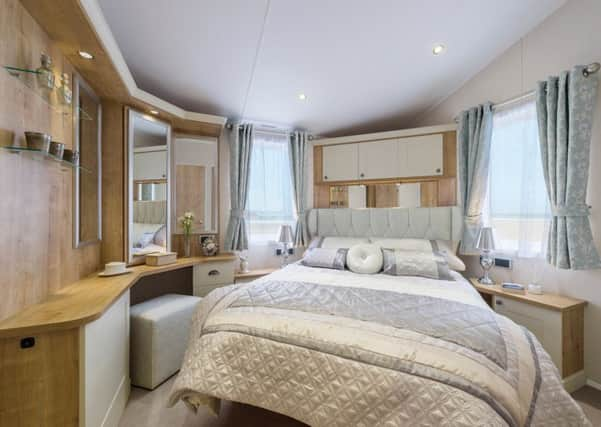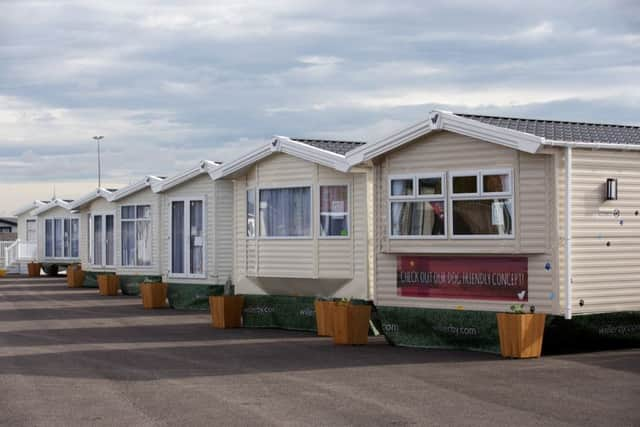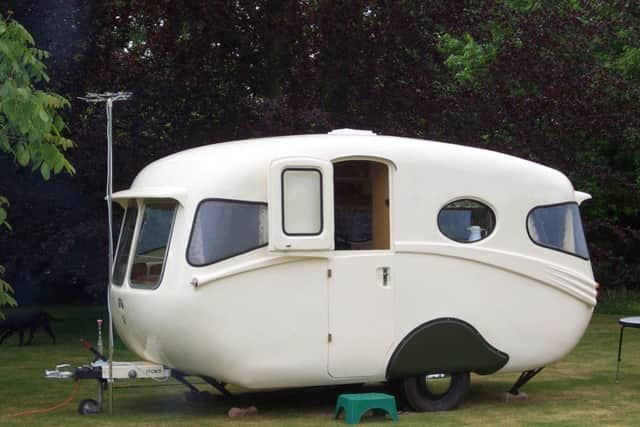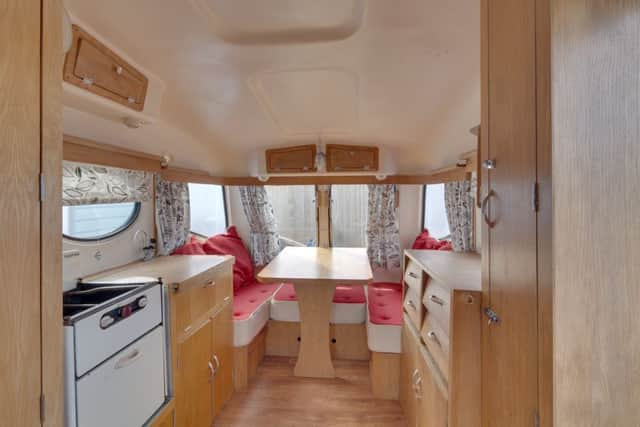Caravan of love: why more of us are buying into a retro getaway


A lack of “For Sale” boards suggests that would-be sellers and buyers are hesitant about making a permanent move thanks to uncertainty about the economy. Yet there’s one property type that is seemingly unaffected by this cautious approach, even though it is certain to diminish in value.
Sales of static caravans have never been healthier, according to Hull-based Willerby, which has been in business for over 70 years. It is the UK’s biggest manufacturer of holiday homes and this week opened a new permanent showground to the public. The range starts at £20,500 for a static caravan and runs to £96,800 for a lodge-style property.
Advertisement
Hide AdAdvertisement
Hide AdTo certify the firm’s longevity, there’s also a 1956 Willerby Vogue touring caravan on display, thought to be one of only 10 left in the world.


“Sales have definitely improved over recent years Our market is generally people age 50-plus within ten years of retirement,” says Paul Drury, Willerby’s Group Technical Manager, who has been with the firm for 27 years.
There have been no surveys to confirm why the market remains buoyant but there is plenty of anecdotal evidence to suggest that our desire to get away from it all is stronger than ever. Paul confirms that “getting away from everyday life” is a main motivator. There are also more people selling their main home to live in static caravans full-time, where sites allow permanent residence.
Carol Simons, 59, recently bought a static on a holiday home site in North Yorkshire and says: “My parents had one by the coast when we were little and I have so many happy memories of going there for holidays and weekends.
Advertisement
Hide AdAdvertisement
Hide Ad“I wanted to do the same for my grandchildren. I know it won’t be a great financial investment but it will pay me back in pleasure. It’s about having somewhere to escape to and relax and somewhere to make memories with our children.


“When I retire, I plan to spend a lot of time here.”
The popularity of “the van” has been boosted by regular upgrades and a bid to keep up with interior trends. Willerby, which sells its homes via dealerships and holiday site owners, was founded by Walter Allen in 1946. His early caravans were wood-framed, wood-clad tourers with canvas roofs but he quickly identified a market for static versions.
They became popular in the late 1950s and 1960s when owners realised that if they could park a caravan on a site year-round they wouldn’t have to bother towing it. Farmers spotted the opportunity and static caravan sites were born.
“The early caravans were basic with no insulation and very little storage. They were a base, somewhere to get your head down and that was it but over the last 20 years both the size and specification have increased,” says Paul.


Advertisement
Hide AdAdvertisement
Hide AdTo compete with timber lodges, which have encroached on the market, there are enormous 40ft by 20ft twin units clad in wood or plastic wood-effect shiplap. “The benefit of a twin unit over a timber lodge is that they are more affordable and they can be built in the factory quickly and in volume,” says Paul. “We can have them on site within three to six months, half the time it takes to build lodges.”
The interiors are a home from home with built in furniture, full-size kitchens and decor designed by a team that takes its lead from Laura Ashley and John Lewis. The “vans” are also warm thanks to insulation, improved air tightness and better glazing
“We’ve improved the energy efficiency and running costs significantly and we are always evolving and innovating,” says Paul. It may soon be a case of “Back to the Future” as the original 1956 Vogue Robin is one of the star attractions at the Willerby showground. The cute and curvy retro home on wheels is made from moulded plastic with a bed that turns into a dining table and benches during the day and an original 1950s cooker.
It may be rudimentary but what it lacks in space and luxury, it makes up for with vintage charm.


Advertisement
Hide AdAdvertisement
Hide AdJudging by the effect it is having on visitors, it could be a best-seller if the firm decide to put it back into production. “We wouldn’t dismiss it,” says Paul. “If the market is there there’s no reason why we couldn’t reproduce it.”
*Willerby, www.willerby.com. The National Association of Caravan Owners provides advice to owners of static caravans, www.nacoservices.com
*You can find static caravans from less than £10,000 second-hand but check the shelf-life as most sites insist that you replace vans after about 15 years. New versions range from about £20,000 up to £100,000. Check the price includes VAT.
*You won’t get a mortgage but some sites offer loans. Check the interest rates as they can be high.
Advertisement
Hide AdAdvertisement
Hide Ad*Your caravan will depreciate. in value, bBut some sites will allow you to let it so you can derive an income from it.
*Site fees vary depending on facilities. Get a lawyer to check the contract. Other costs include energy bills.